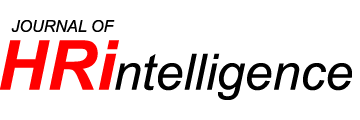การบริหารทุนมนุษย์กับทรัพยากรมนุษย์ : แนวคิดที่เหมาะสมต่อการนำมาใช้ในองค์กรไทย
Human Capital VS. Human Resources Management: The Applicable Approach for Thai Organizations
อาจารย์ ดร.ชินวัตร เชื้อสระคู
นายวิชัย เปรมมณีสกุล
นายธรา สิงห์คะสะ
คณะบริหารธุรกิจและการบัญชี มหาวิทยาลัยราชภัฏร้อยเอ็ด
Chinnawat Chueasraku, (Ph.D.)
Mr.Vichai Premmanisakul
Mr.Tara Singkasa
Business Administration and Accountancy, Roi et Rajabhat University
|
|
บทคัดย่อ
บทความนี้มีลักษณะความเป็นปรัชญา เศรษฐศาสตร์ประยุกต์ แนวคิดวัตถุนิยมและทุนนิยม มีวัตถุประสงค์เพื่อเสนอทัศนะและแยกแยะระหว่างแนวคิดการบริหารทรัพยากรมนุษย์เปรียบเทียบกับแนวคิดการบริหารทุนมนุษย์ซึ่งมีความลุ่มลึก กว้างขวางและเป็นเครื่องมือด้านการจัดการเชิงกลยุทธ์มากยิ่งขึ้นและเพื่อมุ่งหาคำตอบรวมทั้งประเมินทางเลือกจากองค์ความรู้ที่เป็นแนวปฏิบัติที่เป็นเลิศ (Best Practices) และแนวปฏิบัติที่สอดคล้องกับวัฒนธรรม (Best Fit) ว่าแนวทางใดมีความเหมาะสมในการนำไปปฏิบัติในบริบทขององค์กรทั่วไปซึ่งรวมทั้งองค์การภาครัฐและภาคเอกชน ผู้เขียนได้แบ่งโครงสร้างบทความออกเป็น 2 ส่วนคือ ส่วนแรก เป็นการเสนอแนวคิดและเปรียบเทียบให้เห็นพัฒนาการการบริหารทรัพยากรมนุษย์เช่นปัจจุบันไปเป็นการบริหารทุนมนุษย์ ส่วนที่สอง การตีความในมิติของความเหมาะสมเมื่อนำมาใช้ในองค์กรของไทย โดยใช้องค์ความรู้ 2 ลักษณะ ได้แก่ 1) การวิเคราะห์แนวปรัชญา ได้แก่ ภววิทยา ตรรกศาสตร์ จริยศาสตร์ คุณวิทยา ญาณวิทยาและวิธีวิทยา 2) ศึกษาโดยเน้นแนวคิดของ Burrell และ Morgan (1979) แล้วจึงบูรณาการทั้ง 2 ลักษณะมาเปรียบเทียบและต่อการประยุกต์ใช้ในบริบทขององค์กรไทย
ในการศึกษาใช้เครื่องมือการศึกษาข้อมูลจากเอกสาร อันได้แก่ แนวคิดและทฤษฏีต่างๆ รวมถึงข้อมูลอื่นๆ
ที่เกี่ยวข้องทั้งวิเคราะห์ เปรียบเทียบ และแยกแยะไปพร้อมกันนั้น พบว่า หลักการบริหารทรัพยากรมนุษย์กับแนวคิดการบริหารทุนมนุษย์ไม่สามารถตีความชี้เฉพาะแบบองค์รวม (Generalization) ได้ แต่ข้อพิจารณาสำคัญอยู่ที่ผลลัพธ์มากกว่าวิธีการ (การเลือกเครื่องมือหรือนำแนวคิดไปใช้ระหว่างการบริหารทรัพยากรมนุษย์หรือทุนมนุษย์) โดยวัดจากความสามารถในการบริหารขององค์กรว่ามีประสิทธิภาพและประสิทธิผลหรือไม่ อย่างไรก็ตาม ในทัศนะของผู้เขียน
ซึ่งใช้การมององค์การในลักษณะเปรียบเทียบ (Metaphor) โดยที่องค์การเอกชนมีความเป็นพลวัตสูง เปลี่ยนแปลงและพลิกบทบาทได้เร็ว (Transformation) การนำแนวคิดทุนมนุษย์มาปฏิบัติน่าจะส่งผลลัพธ์ที่ต้องการ ในขณะที่องค์กรรัฐซึ่งเน้นเรื่องโครงสร้างและการควบคุม (Morgan, 1986) ยังมีข้อจำกัดด้านการขับเคลื่อนทั่วทั้งองค์กรและรูปแบบการบริหารที่ใช้เอกสารหรือความเป็นธุรการ (Transection) อยู่ การปฏิบัติตามแนวคิดทรัพยากรมนุษย์ยังคงสามารถจัดการและพัฒนาให้บุคลากรมีสมรรถนะได้เช่นเดียวกัน เพียงแต่ปรับให้เป็นการจัดการทรัพยากรมนุษย์เชิงกลยุทธ์ (Strategic HR Management) ดังนั้น ทางเลือกในการจัดการคนในองค์กรอาจพิจารณา “การบูรณาการของทั้งสองกระบวนทัศน์” ได้แก่ การประสานและการพึ่งพาอาศัยกันของความเป็นผู้เชี่ยวชาญด้านทรัพยากรมนุษย์และความสามารถเชิงกลยุทธ์ทุนมนุษย์ ซึ่งการนำแนวคิดทั้งคู่มาปรับใช้สอดคล้องกับผลการศึกษาของ Chueasraku (2018) ซึ่งพบว่า ช่วยส่งผลกระทบต่อความสำเร็จของผลการปฏิบัติงานในองค์กรโดยสามารถทำนายประสิทธิภาพในการจัดการบุคลากร (People Management Effectiveness) ได้ถึงร้อยละ 54.9
คำสำคัญ : ทุนมนุษย์, ทรัพยากรมนุษย์, องค์กรไทย
|
|
Abstract
This article studies the application among Human Capital Management and Human Resources approach in Thai organizations based on the concepts of applied economics, materialism and capitalism. There are two objectives of the study. Firstly; to exhibit the knowledge collecting from Human Resources and Human Capital theorists and practitioners. Secondly, to investigate and assess whether the application of best practices vs. best fit is preferable and lead to the desire outcome of Thai’s organizations (both of public and private units). It is divided into two main parts. The first part will describe and discuss the both concept and their dissimilarity. The second part discusses the application of this approach in terms of appropriateness when adopting in Thai organizations’ context. This is done by employing 2 key analytical approaches: 1) Philosophical-based analyses, i.e., ontology, epistemology, logic, ethics, axiology and methodology; 2) Concentrating and adopting Burrell and Morgan (1979) ideologies.
The data collection is principally based on the secondary data by reviewing the relevant literature including concepts, principles, theories as well as analysis and interpretation of method-comparison study. This paper compares and distinguish, which approach is the most desirable between human capital and human resources management. Because these two people management approaches are not inherently ‘good’ or ‘bad.’ They are just different and interchangeable. But in the end, achievement of likable firm performance is primarily focused. The writer’s perspective cannot generalize that any of these two concepts is compatible with all types of organization. Thai’s private firm, a dynamic and transformational mode may suitably fit with the application of human capital approach, while the transactional style of government unit that is implied as organization as machines (Morgan, 1986) hold a limitation and challenging from the heavy and bureaucratic system. The latter organization still deploy the human resources concept but should enhance this approach strategically.
As a conformist, to just follow through without strict consideration may lead to the opposite outcomes. As both of these people management approaches are mutually corroboration and interdependence; therefore, the optional preferred application over the firms could be ‘mixed approach’ that sustains the professionalism of human resources, while ensuring the strategic human capital management. Conform to the study of Chueasraku (2018) that found the collaboration among two approaches have led and significant effects on the people management effectiveness with the power of prediction as 54.9%.
Keywords:
Human Capital, Human Resources, Thai organizations
--------------------------------------
Corresponding Author E-mail : chinnawat.c@reru.ac.th
|

